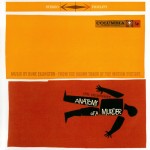The Apprentice
 The National Law Journal recently reported that the law firm of Howrey & Simon has adopted an innovative training program for new associates. Newly hired lawyers will serve a two year “apprenticeship” prior to being fully integrated into the law firm. This program will reduce the number and the compensation of the law school graduates hired by the firm, and it is part of Howrey’s overall program to eliminate “lockstep” salary increases for its associates.
The National Law Journal recently reported that the law firm of Howrey & Simon has adopted an innovative training program for new associates. Newly hired lawyers will serve a two year “apprenticeship” prior to being fully integrated into the law firm. This program will reduce the number and the compensation of the law school graduates hired by the firm, and it is part of Howrey’s overall program to eliminate “lockstep” salary increases for its associates.
Lawyers in Howrey’s apprenticeship program will be paid significantly less than the going rate for first year associates at other large law firms. During their first year, the new associates will take firm sponsored classes on legal writing and gain practical experience by working on pro bono matters. During their second year, the associates in the program will spend several months “embedded” at client sites where their work will be charged at a reduced billing rate. The law firm’s managing partner compared the apprenticeship program to the training programs typically employed in the medical and accounting professions.
The Howrey program provides an opportunity to reconsider the entire continuum of legal education: a process that begins with undergraduate instruction, continues through law school, and is perpetuated by continuing legal education requirements. From time to time, each stage in the continuum comes under scrutiny, as Rick Esenberg’s post on Reengineering Law School illustrates. In my opinion, the continuum should be viewed holistically when we evaluate whether we are succeeding at training competent and ethical members of the legal profession. Law schools, law firms and the state bar all need to cooperate in order to ensure that there are no gaps in the preparation that new lawyers receive as they start their careers. As a member of the Wisconsin Legal Education Commission in 1996, I argued in favor of a program of mandatory skills-based CLE instruction for recent bar admittees. Many of our students are undoubtedly pleased that the State Bar chose not to implement this particular Commission recommendation.
Given my predisposition in favor of practical training, I should be supportive of the Howrey apprenticeship model. Instead, I find myself troubled. In particular, I am wary of the idea of embedding future corporate lawyers within a client’s legal department for any significant period of time.

 I authored an opinion piece in support of Judge Sonia Sotomayor’s nomination to the Supreme Court that was published in the June 28, 2009 edition of the Milwaukee Journal Sentinel. You can read the piece
I authored an opinion piece in support of Judge Sonia Sotomayor’s nomination to the Supreme Court that was published in the June 28, 2009 edition of the Milwaukee Journal Sentinel. You can read the piece  When you are at your Fourth of July cookout or fireworks display this week, see if anyone mentions the Declaration of Independence. If they do, ask “which Declaration of Independence?” After all, there are more than one.
When you are at your Fourth of July cookout or fireworks display this week, see if anyone mentions the Declaration of Independence. If they do, ask “which Declaration of Independence?” After all, there are more than one.